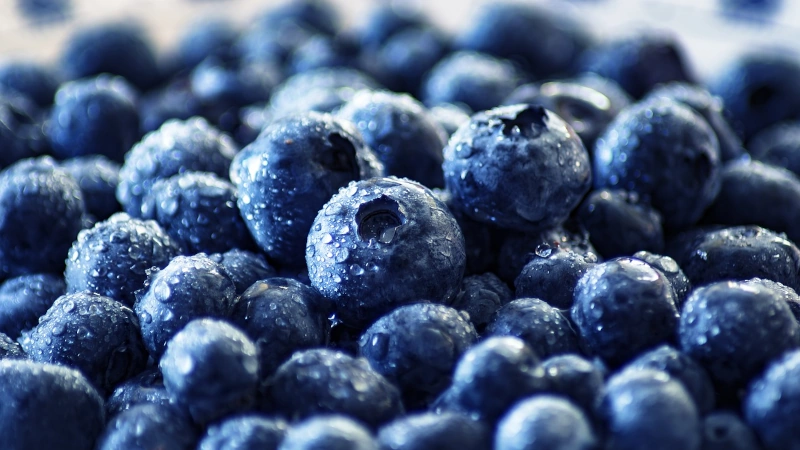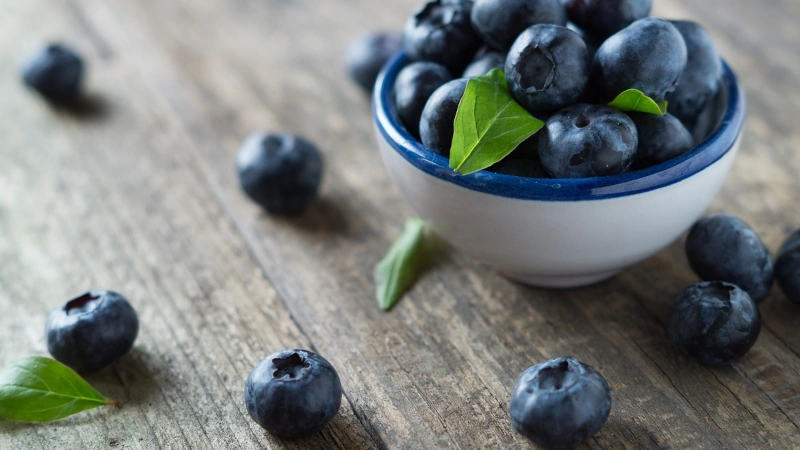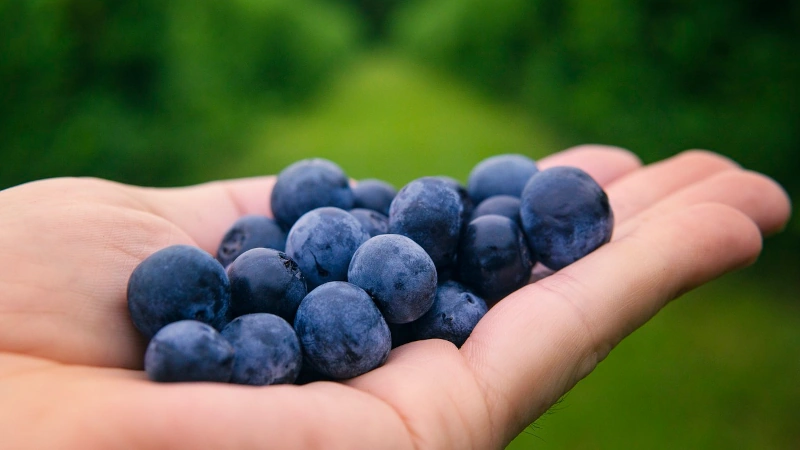Written by: Elaine Magee, MPH, RDN, Albertson’s Companies
Elaine Magee, MPH, RD, is the author of 25 books, including the best-selling TELL ME WHAT TO EAT IF I HAVE DIABETES and the revolutionary book, FOOD SYNERGY. In 2020, Elaine was named one of 10 dietitians “Making a Difference” by Today’s Dietitian Magazine and in 2019 was named one of 11 “All-Stars in the Diabetes World” by Diabetes Forecast Magazine.
Fruits are considered nature’s candy because they are naturally sweet and YES, most people can include fruit in their lower sugar/carb eating plan. Fruits are the complete nutritional package when eaten in whole form. The carbohydrates are consumed along with important nutrients naturally found in the fruit, including fiber, water, vitamins, minerals and plant compounds.
Though not all fruits are created equal when it comes to carbs, 1 cup of whole fruit generally contains about 10-15 grams of carbs. (Blueberries contain 21 grams of carbs per 1 cup serving). For the few fruits that add a bit more carbohydrates (e.g., passion fruit, bananas, mango, grapes and pomegranate), a half cup serving may be more sensible.
Many people watching their carb or sugar intake are trying to prevent or manage diabetes. Check out this recent Australian study examining the associations between fruit intake and risk of diabetes among participants of the Australian Diabetes, Obesity and Lifestyle Study.[1]
The American Diabetes Association notes that fruit can fit into a diabetes friendly meal plan, help to satisfy a sweet tooth and provide extra nutrition.

Berries For the Win!
We want to be sure we aren’t missing out on those delicious, nutrient-dense fruits while we are watching our carb intake. Berries in particular, like blueberries, contain an all-star lineup of plant compounds, plus fiber which helps you feel full and other key nutrients.
Grab A Boost of Blue
If you have prediabetes or diabetes, you may want to go out of your way to grab a boost of blue by enjoying fresh or frozen blueberries. Blueberries get their beautiful blue color from anthocyanins, a phytochemical known to have antioxidant and anti-inflammatory effects in the body.[2] In fact, including blueberries in your diet may offer health benefits and help manage your diabetes.[3]

Tips to Trade Up and Add Blueberries Instead!
- Choose a lower carb yogurt then add flavor and natural sweetness by stirring in some blueberries.
- Make a lower carb smoothie or frozen yogurt by blending frozen blueberries with plain yogurt (plus vanilla extract), or a lower carb vanilla or blueberry yogurt.
- Add fresh or frozen blueberries, a few drops of vanilla extract and a sprinkle of ground cinnamon, to your oatmeal or chia pudding instead of maple syrup, brown sugar or honey. This works like a charm!
- Whip up some whole grain pancake or waffle batter with no added sugar and stir in fresh or frozen blueberries for a pop of color, flavor and nutrients.
- Top your favorite salad with a sprinkle of blueberries for a sweet twist.
For more ideas on how to grab a boost of blue, and how blueberries can seamlessly fit into a diabetes friendly meal plan, check out this American Diabetes Month toolkit from the U.S. Highbush Blueberry Council: https://bit.ly/3vstlaC
The post Can fruit be included in a diabetes friendly eating plan? first appeared in The Foundation for Fresh Produce’s Have A Plant® blog.
REFERENCES
[1] Bondonno NP, Davey RJ, Murray K, Radavelli-Bagatini S, Bondonno CP, Blekkenhorst LC, Sim M, Magliano DJ, Daly RM, Shaw JE. Associations Between Fruit Intake and Risk of Diabetes in the AusDiab Cohort. J Clin Endocrinol Metab. 2021 June. doi.org/10.1210/clinem/dgab335
[2] Joseph SV, Edirisinghe I, Burton-Freeman BM. Berries: Anti-inflammatory Effects in Human. J Agric Food Chem. 2014 Feb; 62(18): 3886–3903. doi.org/10.1021/jf4044056
[3] Stote KS, Wilson MM, Hallenbeck D, Thomas K, Rourke JM, Sweeney MI, Gottschall-Pass KT, Gosmanov AR. Effect of Blueberry Consumption on Cardiometabolic Health Parameters in Men with Type 2 Diabetes: An 8-Week, Double-Blind, Randomized, Placebo-Controlled Trial. Curr Dev Nutr. 2020 Mar 9;4(4):nzaa030. doi: 10.1093/cdn/nzaa030.
About The Foundation For Fresh Produce And Have A Plant® Movement


The Foundation for Fresh Produce’s vision is to grow a healthier world by changing the trajectory of human health. The produce industry has the potential to provide solutions for many of the world’s greatest health and economic challenges – especially those surrounding nutrition and hunger.
The Foundation focuses on improving the appeal of fruit and vegetables as an integral part of people’s diets, supporting the development of infrastructure and supply chain solutions that provide easier access, and establishing strategic alliances that enable children and families to form healthier eating habits.
The transformative Have A Plant® Movement inspires consumers with compelling reasons to believe in the powerful role fruits and vegetables can play to fuel happy, healthy and active lifestyles.


